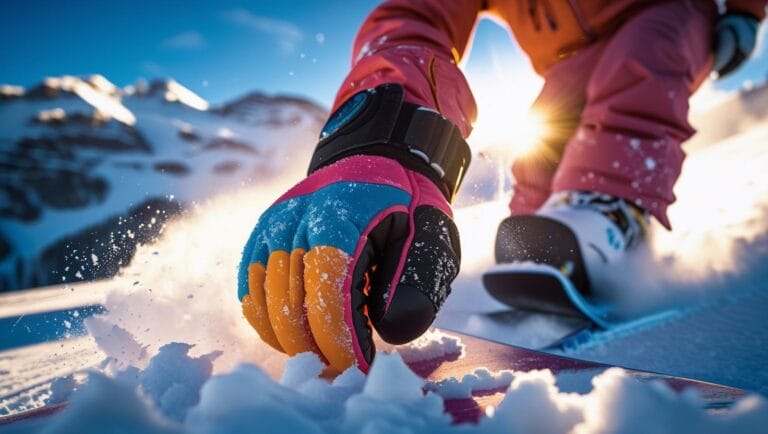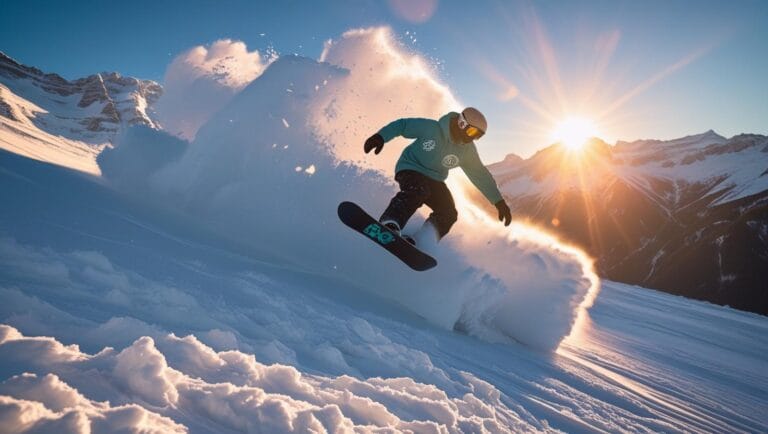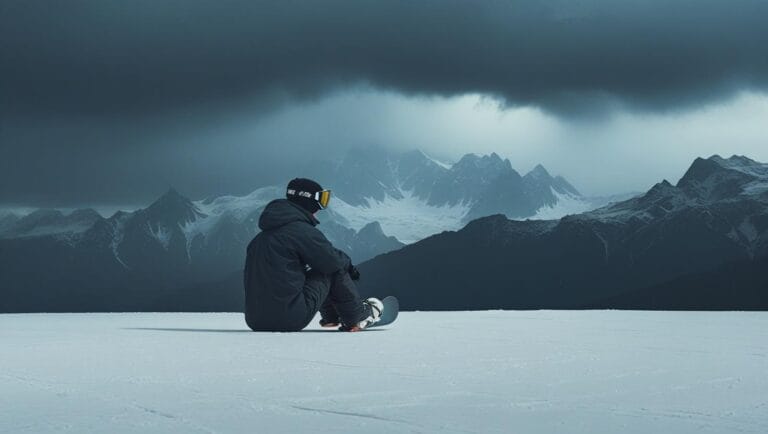Why Do My Feet Hurt When I Snowboard? Causes, Fixes, and FAQs
Snowboarding is an exciting activity that provides the thrill of gliding over powdery slopes. However, foot pain can quickly turn a great day on the mountain into an unpleasant experience. If you’ve ever asked, “Why do my feet hurt when I snowboard?” you’re not alone. From beginners to seasoned riders, many snowboarders experience foot discomfort for various reasons.
This blog will explore the common causes of foot pain while snowboarding, solutions to fix them, and frequently asked questions on the topic.
Common Causes of Foot Pain While Snowboarding
1. Boot Fit Issues
The most common cause of foot pain is improperly fitting snowboard boots. Your boots should be snug but not overly tight. Here are some typical fit-related issues:
- Boots too tight – Restrict blood flow, causing numbness and pain.
- Boots too loose – Excess foot movement inside the boot can cause blisters and discomfort.
- Pressure points – Some boots have design flaws or fit issues that create localized pain.
2. Improper Strapping and Lacing
If your bindings are too tight or your boots aren’t laced correctly, different areas of your foot may experience pain.
- Over-tightening can cut off circulation.
- Under-tightening can cause foot instability and strain.
3. Foot Fatigue and Overuse
If you’re new to snowboarding or haven’t been on the slopes in a while, your feet might not be accustomed to the constant pressure and movement. Extended riding without breaks can cause foot fatigue and soreness.
4. Lack of Arch Support
- Flat feet – Riders with flat feet may experience arch pain due to inadequate support.
- High arches – Can cause uneven pressure distribution, leading to discomfort.
- Stock insoles – Many snowboard boots come with basic insoles that lack sufficient support.
5. Cold-Related Issues (Numbness or Frostbite)
Cold feet can become uncomfortable and, in severe cases, lead to frostbite. Poor circulation, tight boots, or improper sock choices can exacerbate the issue.
6. Incorrect Stance or Binding Setup
- Stance width – If your stance is too wide or too narrow, it can put excessive strain on your feet.
- Binding angles – Improper angles may cause discomfort.
- Weight distribution – Incorrect weight shifting can lead to excessive pressure in certain foot areas.
7. Medical Conditions
- Plantar fasciitis – Inflammation of the plantar fascia can cause heel and arch pain.
- Morton’s Neuroma – Tight boots can put pressure on nerves between the toes, causing pain.
- Tendon irritation – Overuse of foot muscles can lead to soreness.
How to Prevent and Reduce Foot Pain While Snowboarding
1. Get the Right Boot Fit
- Visit a professional at a snowboard shop to find the best boot size and shape for your feet.
- Try multiple brands, as widths and fits vary.
- If possible, heat-mold your boots for a customized fit.
2. Use Supportive Insoles
- Replace stock insoles with custom or high-quality insoles for better arch and heel support.
- Consider orthotic footbeds if you have flat feet or high arches.
3. Adjust Binding Tightness and Boot Lacing
- Lace your boots properly—snug but not overly tight.
- Adjust your bindings to find a comfortable and secure position.
- Experiment with different lacing techniques to relieve pressure points.
4. Optimize Your Stance and Binding Setup
- Test different stance widths to find the most natural and comfortable one.
- Adjust your binding angles to reduce foot strain.
- Make small adjustments and test different configurations to see what works best.
5. Wear the Right Socks
- Choose thin, moisture-wicking snowboard socks to keep your feet warm and dry.
- Avoid cotton socks, as they retain moisture and make your feet colder.
- Don’t wear multiple layers of socks, as this can restrict circulation.
6. Stretch and Take Breaks
- Rest your feet between runs.
- Stretch before and after snowboarding to relieve stiffness.
- Perform foot exercises to build endurance and strengthen foot muscles.
7. Keep Your Feet Warm and Dry
- Use toe warmers if your feet get cold easily.
- Make sure your boots are dry before each ride.
- Keep your feet moving on the lift to maintain circulation.
8. Strengthen Your Feet and Ankles
- Improve balance to enhance foot stability.
- Strengthen your arches, ankles, and calves to reduce fatigue.
How to Choose the Right Snowboard Boots for Your Foot Shape
Snowboard boots aren’t one-size-fits-all — your comfort, control, and even injury prevention depend on getting a boot that matches your foot shape. Here’s how to choose the right pair:
1. Understand Your Foot Shape
- Wide vs. Narrow Feet: If you have wide feet, look for boots labeled as “wide fit” or try brands known for roomier toe boxes. Narrow-footed riders might prefer brands with tighter internal construction.
- High vs. Low Arches: Riders with high arches should look for boots with strong arch support or space for custom insoles. Flat-footed riders may need boots with more cushioning underfoot to prevent fatigue.
- Instep Height: A high instep may require a boot with a more forgiving upper shell to avoid pressure points, while a low instep might need extra tightening or better heel hold systems.
2. Try Before You Buy
- Always try boots on with your snowboard socks.
- Stand up and simulate riding positions to check for pressure points.
- Your toes should barely touch the end when standing straight, but pull back slightly when you bend your knees.
3. Boot Flex and Fit
- Softer boots are more forgiving and better for beginners or freestyle riders.
- Stiffer boots offer more support and precision for all-mountain or aggressive riders.
- Match flex with your riding style and your body type—lighter riders may prefer a softer boot even at advanced levels.
4. Don’t Rely Only on Size
Snowboard boot sizing isn’t always the same as regular shoe sizing. Always refer to each brand’s specific size chart and consider your foot volume, not just length.
5. Heat Molding Can Help
Many modern snowboard boots feature heat-moldable liners, which conform to your unique foot shape for a custom fit. Ask your local shop if this service is available.
Best Insoles for Snowboarding to Reduce Foot Pain
Foot pain can ruin a perfect day on the mountain. Whether it’s arch fatigue, heel pressure, or cold toes, the right insoles can make a huge difference. Here’s what to look for — plus top recommendations.
Why You Need Snowboarding Insoles
Standard snowboard boot liners often lack proper arch support and shock absorption, especially for riders with specific foot shapes. Insoles tailored for snowboarding:
- Improve balance and control
- Reduce pressure points
- Support arches and heels
- Minimize fatigue on long runs
What to Look For in a Snowboard Insole
- Arch Support: Choose high, medium, or low depending on your natural arch.
- Heel Cushioning: Extra padding or gel inserts reduce impact from landings or icy terrain.
- Stiffness: Stiffer insoles offer more support for aggressive riders; softer ones are better for comfort and casual cruising.
- Moisture-Wicking Material: Keeps your feet dry and warm.
Top Recommended Insoles for Snowboarding
- Superfeet Green
Ideal for high arches and all-mountain riding. Offers rigid support and deep heel cups. - Sidas Winter 3Feet Insoles
Tailored versions for low, medium, and high arches. Thin profile works well in snug boots. - SOLE Performance Insoles
Heat-moldable and eco-friendly, great for custom fit and arch alignment. - Remind Medic Insoles
Designed specifically for action sports like snowboarding. Cushioned and responsive for freestyle or park riders. - Dr. Scholl’s Sport Insoles (Budget Option)
While not snowboarding-specific, they offer decent shock absorption for occasional riders.
Snowboarding Foot Pain in Beginners vs. Pros: What’s the Difference?
Foot pain is one of the most common complaints among snowboarders — but the type, cause, and intensity of that pain often varies significantly between beginners and experienced riders. Understanding the differences can help you fix the issue faster and ride longer.
For Beginners: Pain from Poor Fit & Technique
Common causes:
- Boots too tight or too loose
- Wrong foot positioning or over-tensioning the straps
- Lack of muscle conditioning in feet and ankles
- Flat or poorly supportive insoles
Symptoms:
- Numb toes or burning arches after short sessions
- Cramping in the arch or ball of the foot
- General fatigue from lack of foot strength
Solutions:
- Get professionally fitted boots or heat-moldable liners
- Use supportive insoles made for snowboarding
- Do pre-season foot strengthening and balance exercises
- Loosen bindings slightly to reduce pressure points
For Pros: Pain from Overuse & Aggressive Riding
Common causes:
- Long hours on the slopes without adequate recovery
- High-impact landings and tight carving
- Stiff, performance-driven boots causing pressure buildup
- Old or worn-down insoles/liners
Symptoms:
- Heel bruising or mid-foot soreness after full-day sessions
- Pain in high-pressure zones (instep, heel, or toes)
- Soreness from repetitive high-performance movements
Solutions:
- Rotate boots or insoles to reduce wear
- Use custom orthotics or performance insoles
- Incorporate recovery techniques like foam rolling and ice baths
- Focus on foot mobility and recovery between sessions
Flat Feet and Snowboarding: What You Need to Know
Having flat feet (or fallen arches) doesn’t mean you have to suffer through snowboarding. With the right gear and a bit of prep, you can ride comfortably and confidently.
What Are Flat Feet?
Flat feet occur when the arches of your feet collapse or are naturally low, causing the entire sole to touch the ground. This can lead to:
- Foot fatigue
- Pain in the arch, ankle, or knees
- Poor shock absorption
- Overpronation (rolling inward)
Common Issues for Snowboarders with Flat Feet
- Arch pain inside boots after just 1–2 runs
- Lack of foot stability, affecting balance and edge control
- Increased risk of fatigue and cramping on long days
Tips for Riding Comfortably with Flat Feet
- Invest in High-Quality Insoles
Look for supportive insoles designed specifically for low arches. Brands like Superfeet Blue, Sidas 3Feet Low, and Remind Insoles can help reduce pressure and increase stability. - Choose the Right Snowboard Boots
- Go for boots with good midfoot support and a firm heel hold.
- Avoid overly soft boots that allow your foot to collapse further inside.
- Consider boots with heat-moldable liners to get a custom fit around your foot shape.
- Add Foot Strengthening Exercises
Building strength in the arch and ankle muscles can improve overall support. Toe curls, towel scrunches, and balance work can all help. - Pay Attention to Binding Setup
A stance that’s too wide or angles that don’t suit your natural alignment can worsen foot pain. Try a slightly narrower stance and experiment with stance angles that feel more neutral for your knees and arches.
Frequently Asked Questions (FAQs)
Q1: Should my snowboard boots be really tight?
Your boots should feel snug but not uncomfortably tight. They should secure your heel without cutting off circulation or creating pressure points.
Q2: Why do my toes go numb while snowboarding?
This is often caused by tight boots, poor circulation, or cold temperatures. Try loosening your boots slightly and wearing proper socks.
Q3: Can I wear regular insoles in snowboard boots?
Regular insoles may not provide enough support for snowboarding. Sports insoles or custom orthotics are recommended.
Q4: Should I stop riding if my feet cramp?
Yes, take a break. Stretch your feet, wiggle your toes, and check if your boots are too tight.
Q5: Will my boots break in over time?
Yes, snowboard boots typically have a break-in period. After a few days of riding, they will mold better to your feet.
Q6: How can I prevent foot pain while snowboarding?
Stretch before riding, use supportive insoles, wear proper socks, and ensure your boots fit correctly.
Q7: Can my binding setup cause foot pain?
Yes, improper stance width and binding angles can cause discomfort. Adjust your setup to find what feels most comfortable.
Conclusion
Foot pain is a common issue in snowboarding, but with the right gear, adjustments, and foot care, you can significantly reduce discomfort. Ensuring a proper boot fit, optimizing your stance, and strengthening your feet will greatly enhance your comfort and performance on the slopes.
With the right approach, you can focus on enjoying the ride rather than worrying about sore feet. Happy shredding!



